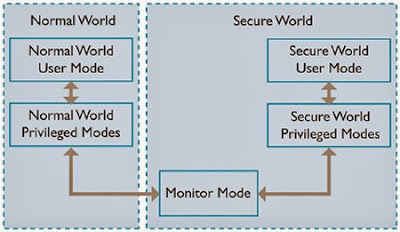A lot of folks are saying that phones are so fast these days that the 64-bit processor in the iPhone 5s does not change the user experience -- it is nothing more than a marketing gimmick.
Wrong.
This reminds me of the time I was consulting to MicroPro International, publisher of WordStar -- the most popular word processing program of its time. I was fired as a consultant after telling them that the second-generation word processor they were developing, WordStar 2000, was a loser because it was not graphically oriented. They ignored me because, hey, a graphically oriented word processor would require 64 MB of memory and 16 MB was a lot of RAM at the time.
In a Moore's Law world, you design for the future, not the present. Apple's 64-bit CPU will not make placing phone calls or texting any faster, but it provides a new platform on which to build new applications. For example, we will see the substitution of computation for hardware in making better videos and photographs -- the 41 megapixel camera in the Lumia 1020 will not seem so amazing in a few years. Improved voice recognition and synthesis will demand more horsepower. Wearable things and physiological monitoring applications will be developed to use all the processing power we can muster.
And, how about something mundane like PC replacement?
My main computer is a Dell Precision M4400 laptop. It has a dual core 64 bit processor with 410 million transistors that is clocked at 3.06 GHz. It has 8GB of memory and a 256 GB solid state drive.
I do 99% of my work on that machine, and unless I am streaming or rendering video, it seems quite responsive. If the CPU were ten times as fast, I don't think I would notice much increase in my productivity.
The iPhone 5s has has a dual core 64 bit processor with "over 1 billion" transistors that is clocked at 1.3GHz. It has 1 GB of RAM and up to 64GB of storage. It also has a motion sensing coprocessor.
Anandtech reports that the new iPhone is substantially faster than its quad core, faster-clocked cell phone competitors -- Apple is using those billion transistors well.
Both have dual core, 64 bit CPUs and judging by the transistor counts and cell phone benchmarks, the iPhone processor should be able to beat my laptop. But, what about the low clock speed and relatively small memory? And two cores sounds kind of lame these days.
Apple has kept clock speed, memory capacity and core count low to save power, but, when docked, power is a minor consideration. I bet Apple's clever engineers could design a dual mode machine, that slowed and saved power when not docked. (Cooling would be a problem when docked and running fast).
Canonical is taking a shot at cell phone docking with Ubunto for Android. It is vaporware for now, but they have a cute video to illustrate the concept:
Apple traditionally does a major iPhone upgrade every two years. This was the year for a minor upgrade, but it laid the foundation for the future. I do not know what applications will be developed to utilize that 64 bit address space and processing power, but ... build it and they will come. ----- Update 9/21/2013 Last week, I asked my class whether they thought the finger print reader on the new iPhone 5s was a big deal. They did not think so -- they said they would be willing to pay from 0 to about $10 for the added convenience. Then I asked them about using it as general ID for authentication and for purchases in stores and online. That perked their interest up. But, will that happen? Brian Roemmele thinks it will and builds a strong case in his post What is Apple’s new Secure Enclave and why is it important?. It turns out that some of those billion plus transistors in the the A7 CPU are devoted to the implementation of patent protected security features. If Roemmele is right, we will see a slew of authentication and transaction-oriented applications for the iPhone 5s and future devices using this technology. Here is the conclusion of his post:
Apple has taken a very slow and methodical approach with the release of Touch ID. We can see that there was a tremendous amount of amazing work that has gone into this project. All of this convergence took over seven years of very hard work. It includes many patent applications, the acquisition of AuthenTec, the selection of the A7 processor and the integration of the TrustZone suite all baked together into what we now know as Touch ID. This has been a long journey that has only just been made public and I am rather certain that Steve Jobs would be quite proud.-----
Update 10/22/2013
The new iPad and iPad mini are out and Gigaom's first look singles out the speed of 64-bit apps and predicts that other developers will follow suit. Here is a quote:
The native Apple apps open super quick and there’s no lag when scrolling or paging through content in Pages or iPhoto. You tap and the device responds. Obviously Moore’s Law is at work here, but it helps that Apple has rewritten its native apps for 64-bit compatibility to be fully optimized with the A7 chip. Developers will be doing the same over the next year, so the iPad Air is likely only going to get better until the next model arrives.Apple built it and they are coming.











No comments:
Post a Comment